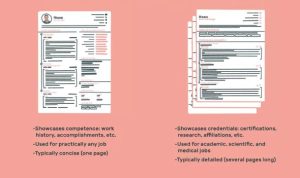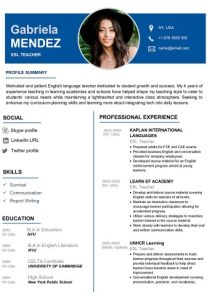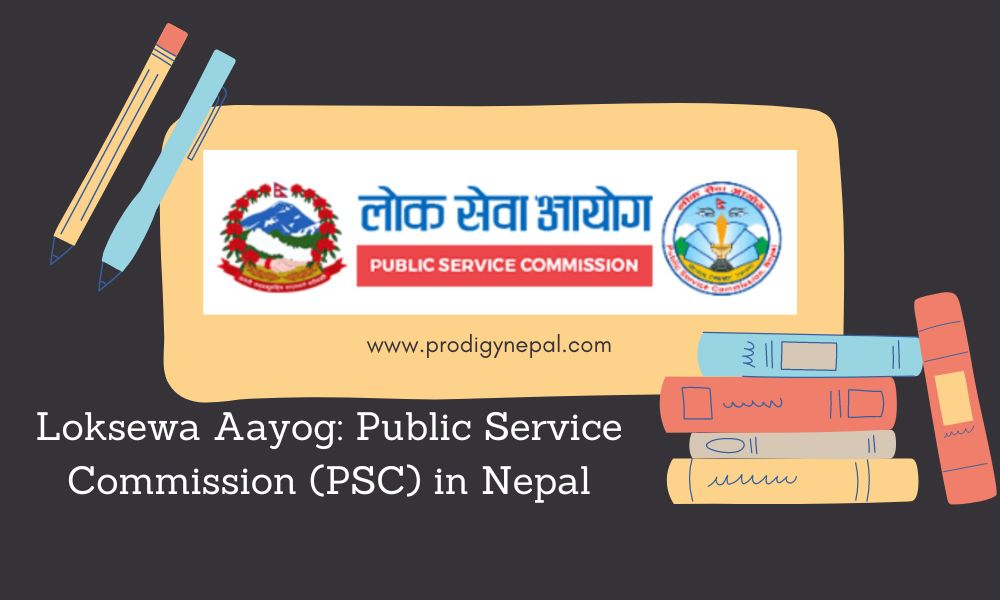In the current highly competitive job market, it’s crucial to possess a meticulously prepared Curriculum Vitae (CV) to distinguish yourself. A perfect CV serves as your initial chance to leave a favorable impression on prospective employers and secure that vital interview.
A CV, an abbreviation for the Latin phrase “curriculum vitae,” translating to “course of life,” is essentially a document crafted to showcase an individual’s academic and professional history.
Typically, a CV encompasses details such as academic credentials, work history, accomplishments, accolades, scholarships or grants received, research endeavors, and any publications or research papers. This document typically spans two to three pages, offering a comprehensive overview of an individual’s professional profile.
10 Tips to create a stand-out CV
This article offers valuable guidance and suggestions for crafting an outstanding CV that significantly enhances your prospects of attaining your desired job.
1. Tailor Your CV for Each Job Application
A prevalent error among job seekers is the utilization of a generic CV for all their job applications. Rather, tailor your CV to match the precise prerequisites of the position you’re seeking. Emphasize pertinent skills, experiences, and accomplishments that clearly illustrate your suitability for the role.
2. Start with a Strong Opening
Commence your CV with a captivating personal statement or objective. Craft a concise paragraph that outlines your career aspirations and your contributions to the role. A skillfully written introductory statement not only captures the reader’s interest but also establishes a favorable tone for the entire CV.
3. Provide a Clear Structure
A well-defined and structured format is essential for an effective CV. Utilize separate sections to logically present your information.
Standard sections encompass contact information, personal statement, professional experience, education, skills, and references. This organized layout facilitates the reader’s swift retrieval of the necessary information.
4. Showcase Your Achievements
Within your professional experience and educational history segments, prioritize showcasing your accomplishments over merely enumerating job responsibilities or coursework.
Employ bullet points to emphasize particular achievements, such as surpassing sales goals, spearheading successful projects, or earning academic distinctions. Whenever feasible, quantify your accomplishments using figures or percentages.
5. Emphasize Relevant Skills
In the skills section, emphasize both technical and interpersonal skills that directly relate to the position you’re pursuing. Incorporate technical proficiencies, language competencies, as well as any certifications or qualifications. Provide concrete instances of how you’ve put these skills into practice in your prior positions.
6. Keep it Concise
Ensure that your CV is succinct and focused. Steer clear of extended paragraphs and superfluous information. Generally, a CV should not exceed two pages in length, although it may stretch to three pages if your experience is substantial. Be rigorous during the editing process and confirm that each piece of information has a distinct purpose.
7. Use Action Verbs
Utilize dynamic action verbs to depict your experiences and achievements. Action verbs communicate a sense of initiative and success. For instance, instead of stating “responsible for managing a team,” express “led a team of ten members.”
8. Proofread and Edit
Mistakes and typographical errors can substantially diminish your prospects of obtaining a job interview. Thoroughly review your CV to guarantee it is devoid of errors. It’s also a good idea to have a friend or family member review it, as a fresh perspective can often detect errors you might miss.
9. Include References
You are not required to include references on your CV; however, you can include a “References Available Upon Request” section. If the employer asks for references, be ready to supply them separately. Ensure that your references are informed about the possibility of being contacted.
10. Format for Readability
Choose a clean and professional layout with a readable font. Utilize bullet points and subheadings to segment information, enhancing the CV’s readability. Steer clear of ornate fonts and excessively artistic designs that might divert attention from your content.
What should you include on a Perfect CV?
Are you in the process of crafting your first CV? Consider these essential sections that should be included when composing a comprehensive Curriculum Vitae.
1. Contact information
Your CV should contain your complete name, a detailed home address, phone/mobile number, email address, and postbox number, among other relevant contact details. These contact details must be accurate and presented in a manner that allows potential employers to easily reach you for further communication and follow-up procedures.
2. Profile/ Objective
The profile section in a CV serves as a concise statement that typically highlights your key attributes to distinguish you from other candidates. It is often positioned at the beginning of a curriculum vitae, selecting a few relevant achievements and skills while expressing your career goals, which serve as the CV’s objective.
For instance, it may read as follows: “I am seeking a Geomatics Engineer position in a field that enables me to apply my technical skills, strong work ethic, and creativity to contribute to the organization’s growth and my personal development.” It is advisable to keep personal statements in the profile section brief and impactful, typically spanning 75 to 100 words.
3. Educational/academic history
It is important to list all previous education, including professional qualifications based on the date in reverse chronological order. Place the most recent at first, then the later and so on. Also, it is better to include qualification type/grades, so that the employer would generate an overview of your academic history.
4. Records of your professional experience
List your work experience i.e., the company or organization, job title and dates of employment and the key responsibilities in reverse date order, making sure that anything you mention is relevant to the job you’re applying for.
Also, this section should come before education/ academic history if you’ve got plenty of relevant work experience.
5. Skills and qualifications
This is the place where you talk about the different foreign languages you can speak and the types of instruments you can competently use. It is never a good idea to exaggerate your skills and abilities, so the key skills that you list here should be relevant to the job as you’ll need to back up your claims at the interview.
If you’ve got lots of job-specific skills you should do a skills-based CV, these can include both hard and soft skills.
6. Projects accomplished and publications
The list of projects and research that you’ve undertaken or accomplished can be listed in this section in order to showcase what you’re capable of. This helps you stand out in the crowd. Regardless of the complexity, you can always list the projects in relevant fields in order to draw the attention of your employer.
Similarly, the publications that have published your works are your awards that you need to include in a CV. It shows how hard you’re worked in the related field to get your work published.
7. Interests
You can enlist your interest and hobbies that are relevant of the position or an organization that you’re approaching to. Interests should be written in such a way that they draw the recruiter’s attention.
Relevant interests should provide a complete picture of who you actually are and would give something to talk about in the interview.
What should/ shouldn’t a perfect CV have?
Also Read: Top 10 Best Digital Wallets in Nepal
A good CV doesn’t have any spellings or grammatical mistakes
The spellings, punctuations and grammars in a CV reflect professionalism. No employer would prefer to go through your CV in order to correct your mistakes. You need to be very careful while choosing the right words and their correct spellings.
Try to avoid over-used phrases
A CV highlights your academic and professional history, for which you need to try your best to upload genuine content in a simple manner. Generic and overused phrases like ‘multitasker’, ‘team player’ etc. should be minimized.
Adjust your CV
Your current CV may not be best suited for the job roles in all the companies. For that, a CV must be tailored in such a way that it meets all the criteria that a company or an organization has asked.
Your CV should be targeted to the role and the employer that has been mentioned on the organization’s website or on an advertising platform.
Use of active verbs when possible
It is better to define yourself in active verbs instead of linking and helping verbs such as ‘started’, ‘advised’ etc. This makes your CV well organized and look more professional.
Check for errors in your CV
Before submitting your CV with a job application, it is always a good idea to thoroughly review your CV for any errors or inconsistencies. For reviewing and proofreading, you can consider asking a trusted colleague or professional mentor. This can be useful in helping you craft a well-polished CV.
Frequently Asked Questions
Is a CV different from a Resume?

A lot of people seem so much confused about a CV and a resume, but the fact is both CV and resume are very much similar in that they’re the documents that summarize one’s professional history, education, skills and achievements. However, it is to be noted that the Americans and Europeans do not use the words CV and resume interchangeably.
A resume is a French word that means ‘abstract’ or ‘summary’ which is a one-page document that provides a precise overview of the previous roles, skills and details about someone’s education and professional background.
A CV, on the other hand, is a comparatively much longer and more detailed document that usually focuses largely on the academic backgrounds and research carried out in the past.
Finally
By following the above-mentioned steps and guidelines, you can try to create a CV on your own.




